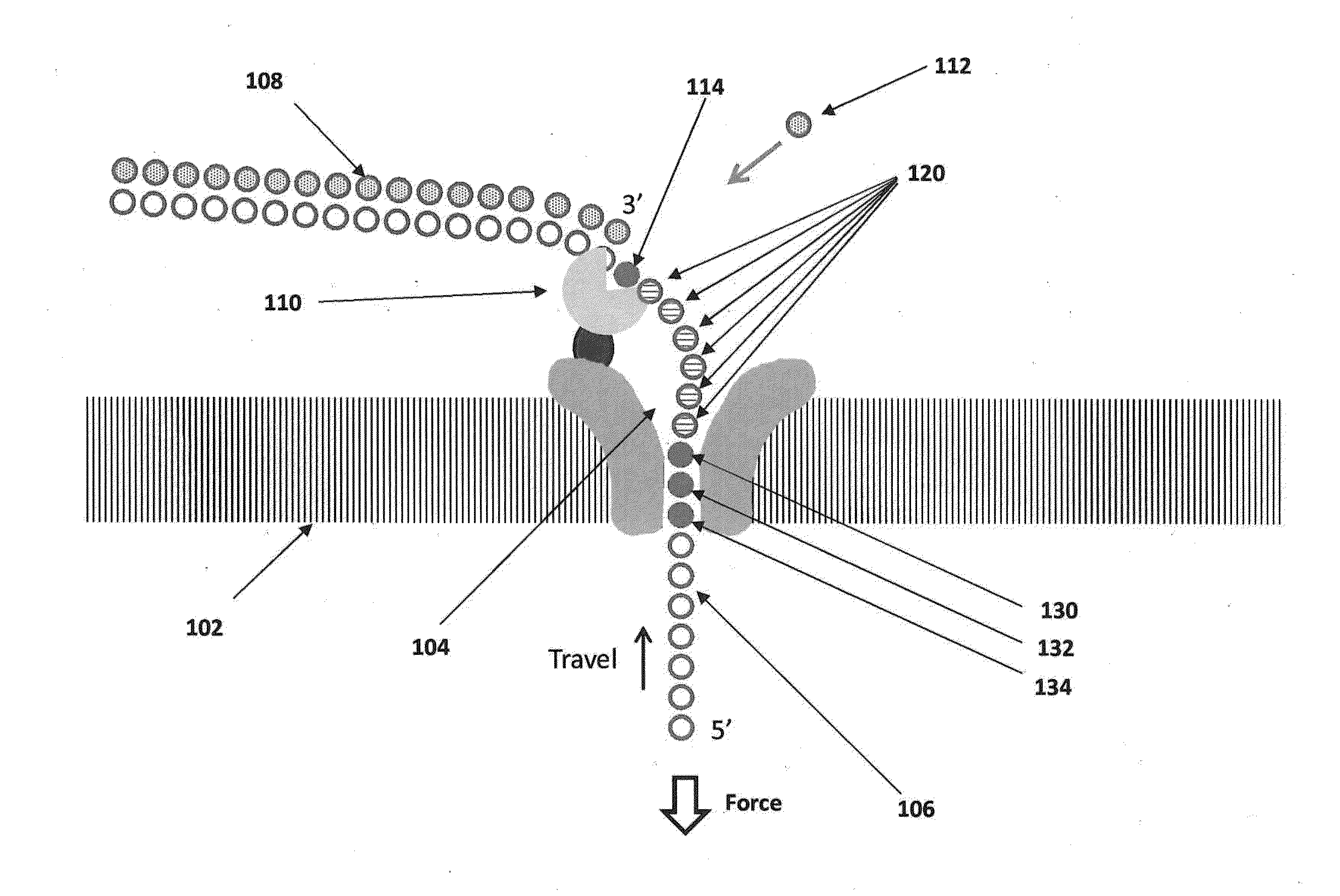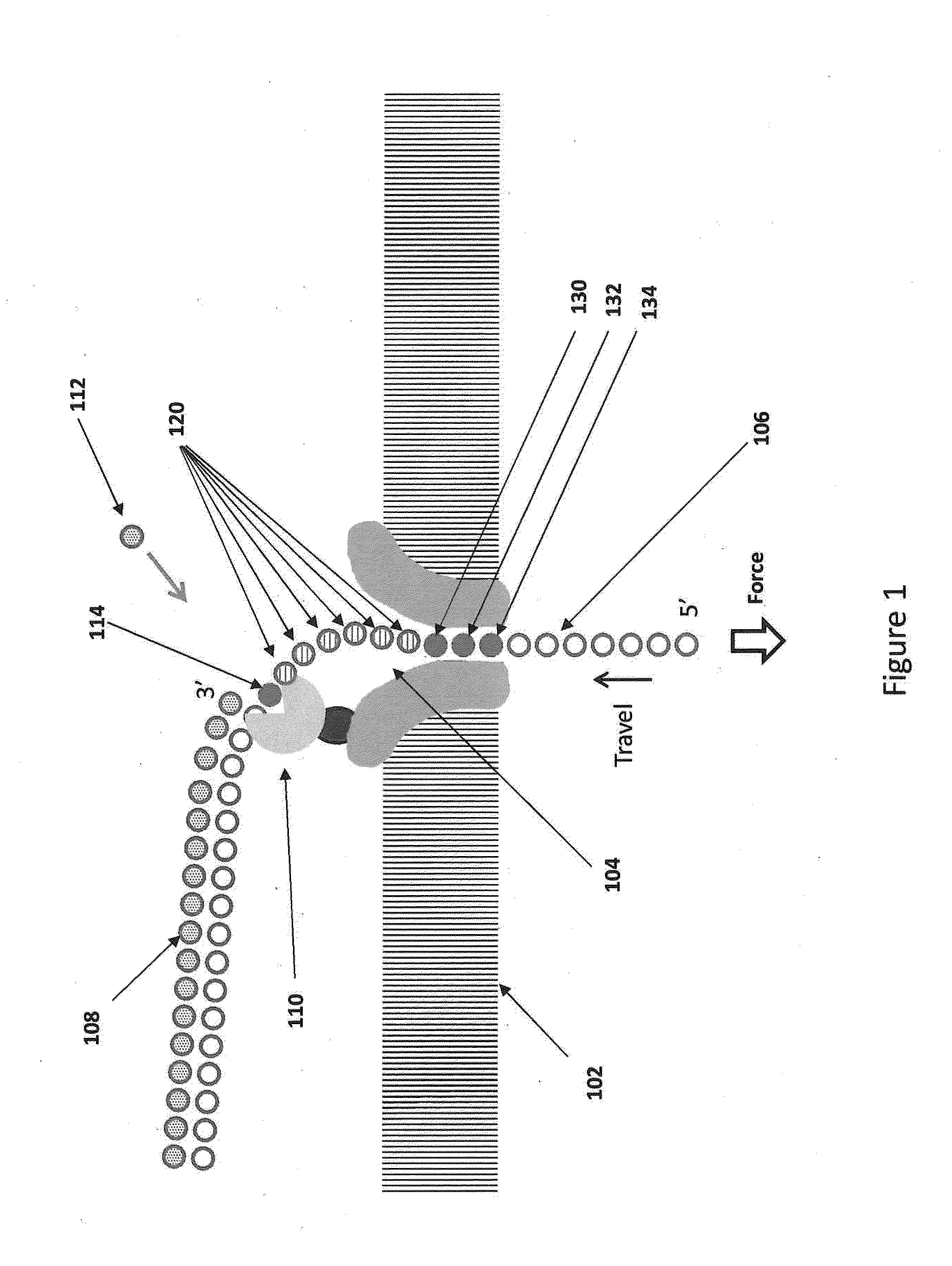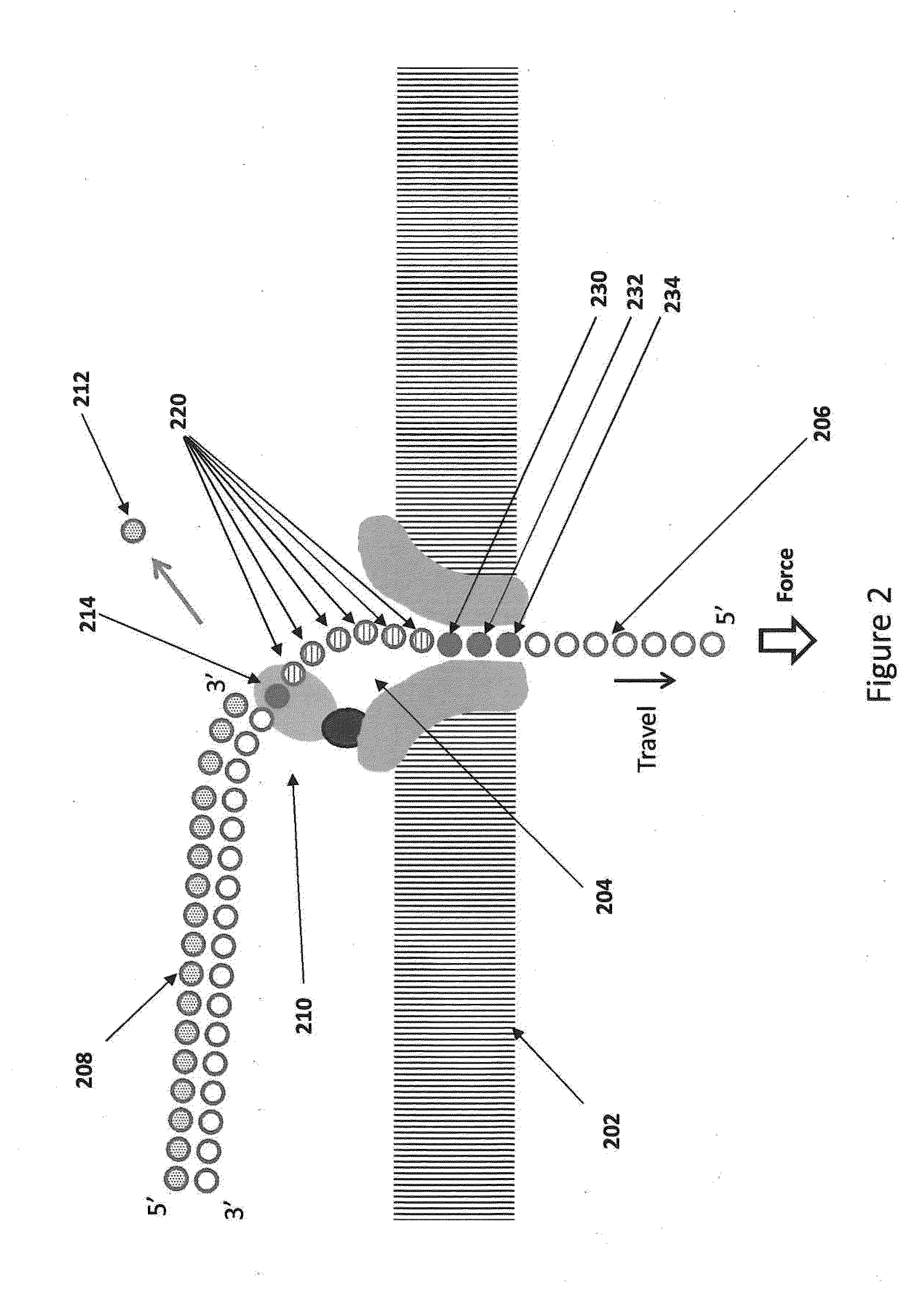Modified base detection with nanopore sequencing
a technology of nanopores and base detection, applied in the direction of fluid pressure measurement, liquid/fluent solid measurement, peptides, etc., can solve the problems of hampered by the limitations of current microarray and second-generation sequencing technology, high-resolution determination of genome-wide methylation patterns from a given sample is difficult, and the error rate is reduced.
- Summary
- Abstract
- Description
- Claims
- Application Information
AI Technical Summary
Benefits of technology
Problems solved by technology
Method used
Image
Examples
example 1
[0171]Repeated Sequencing and Modified Base Determination in Genomic DNA
[0172]Bacterial DNA is isolated and purified, then fragmented with sonication to produce double stranded fragments with and average length of about 5000 bases. The fragments are blunt ended, then ligated to adaptors having a single stranded restriction endonuclease site as illustrated in FIG. 11. The adaptors have palindromic regions covered by a splint as shown in FIG. 8. The primers are extended using DNA polymerase to produce a population of hemi-genomic DNA, and the extended primers are treated with single stranded restriction endonuclease to cleave at the SSRE site. The remaining oligonucleotide dissociates in the reaction medium to leave a 5′ overhang of the nascent strand of 7 bases. The hemi-genomic DNA library is purified using AMPure beads.
[0173]The DNA library is added to helicase in solution under conditions where there is substantially no helicase activity, but where the helicase enzyme binds to the...
PUM
| Property | Measurement | Unit |
|---|---|---|
| voltage | aaaaa | aaaaa |
| current | aaaaa | aaaaa |
| pore | aaaaa | aaaaa |
Abstract
Description
Claims
Application Information
 Login to View More
Login to View More - R&D
- Intellectual Property
- Life Sciences
- Materials
- Tech Scout
- Unparalleled Data Quality
- Higher Quality Content
- 60% Fewer Hallucinations
Browse by: Latest US Patents, China's latest patents, Technical Efficacy Thesaurus, Application Domain, Technology Topic, Popular Technical Reports.
© 2025 PatSnap. All rights reserved.Legal|Privacy policy|Modern Slavery Act Transparency Statement|Sitemap|About US| Contact US: help@patsnap.com



